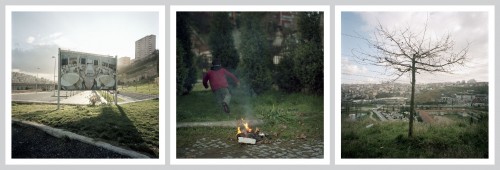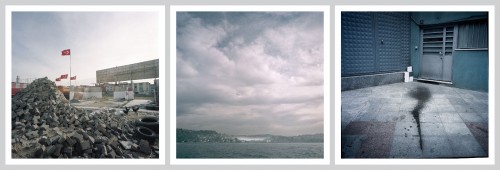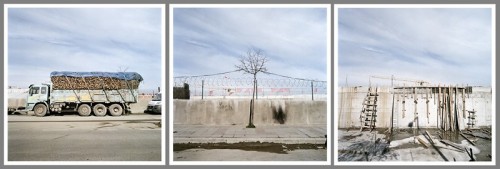Learning a new language in another country is like listening to a radio that is stuck on a single very static-y station. In the beginning, the chatter of daily life is pure noise, its meaning lost in transmission from the speakers’ mouths to your ear. But as the weeks progress and you learn more and more, words start to break through the static; phrases become recognizable; meaning is still elusive, but sometimes rough ideas can be pieced together from the proximity of one known word to another. As larger parts of conversations begin to filter through the fuzz, conversations between neighbors suddenly become comprehensible; while sitting on your balcony at dusk, instead of hearing static, you realize you are accidently listening to them discuss their weekend plans, or the impending visit of relatives.
The above description encapsulates my experience this summer, which I have spent living in Istanbul and studying Turkish. I arrived to Istanbul in mid-June, having left almost exactly one year ago following the completion of a Fulbright grant. During my Fulbright year I wrote a column for the Art21 blog titled Turkish and Other Delights, which examined practices of contemporary art in Turkey. During the nearly eight months I spent traveling through Anatolia to research and write that column, I was overwhelmed by the support I received from artists, curators, and gallerists, who opened their studios, homes and practices to me and shared their time and their stories. Any time an artist takes the time to sit down and talk with you about their work, it is a gift; but as the Art21 series is virtually unknown in Turkey, people’s willingness to believe that my enterprise was legitimate was an even greater act of faith.
In addition, this was done despite my column’s unfortunate title, which tried to use an obscure musical reference to distract from the insulting equation of contemporary art production in this country with the candy that is hawked to English-speaking tourists as Turkish Delight. I learned a lot about what it means to be an American working in this country during my year here, but perhaps the hardest lesson learned was about my own blind spots as a writer, my inability even as a (supposedly) skilled operator within my particular linguistic system to recognize the power of language.
Moving forward, I am grateful that my academic work and continued relationship with Art21 have provided me the opportunity to continue the work I began last year. Though I was primarily in Istanbul this summer to develop my Turkish skills for the sake of my doctoral research, I have spent the past year reflecting on the work that I did before and thus was thrilled to return to the topic. Even as I wrote my last post for Turkish and Other Delights last July, I knew that I had only scratched the surface of the subject of contemporary art production in Turkey, and that any insight that I may have provided through my column was limited and two-dimensional. Not only were there many art professionals whose work I simply did not have enough time to write about, but I also felt that my column failed to accurately reflect the diversity of the community here, which problematizes any effort to speak of “Turkish art” or even the moderately preferable “art made in Turkey.”
First, Turkey in general, and Istanbul in particular, has inherited from its imperial past a rich ethnic mix. While the country’s twentieth-century history of population exchanges and religiously and ethnically-motived persecution have reduced the size of the many non-ethnically Turkish populations (Greek, Armenian, Levantine, Circassian, etc.) that once resided here, many members remain, and they are represented within the artistic community. Of course these individuals are Turkish citizens, and thus “Turkish” by nationality. But the difficult history of persecution and dislocation often makes the mantle of “Turkishness” sit uncomfortably. At the very least, simplistic systems of labeling or categorization fail to register the complexities of history.
Adding to this mix is the ever increasing flow of European and American art professionals continuously moving through town. In the course of my two months here, I experienced this flux first hand, as seemingly every week I met new artists and curators from France, Germany, the Netherlands, the United States, and elsewhere. Some who come to town stay for a long weekend, or a few weeks, or a few months, creating a revolving door sensation of comings and goings that at times feels a bit dizzying for those left behind. (This experience made me appreciate even more the English version of the title that SALT has given to its speaker series, called “Who’s In Town?”).
Increasingly, however, instead of returning home, such foreigners are moving their studios here, opening galleries, and starting arts-related websites or other businesses. In an international climate of austerity and financial instability, Istanbul is developing a reputation as a place where the holy grail of big sales and a relatively cheap cost of living can still be found. And now that SALT’s twin spaces in Galata and Beyoglu are in full operational mode and more galleries are opening—one friend commented that for a while it’s seemed as if there’s a new space opening every month—that span the spectrum from artist-run storefront to blue-chip-in-the-making, there ostensibly exists the infrastructure needed to sustain a major center for making, exhibiting and selling contemporary art.
Taking these factors into account, how can or should one write about the practice of contemporary art in Turkey? What do we do with geography, the nation, with political and cultural context when we write about art? At this moment in time, American and Western European artists more often than not enjoy the privilege of invisibility when it comes to the question of their national identity; to be denied this privilege by having one’s work constantly interpreted on the basis of one’s national identity comes off as a new manifestation of the same Euro-centric perspective that for so long denied non-Western artists equal attention and access to resources.
The answers to these questions that I have worked out for myself are few and far from complete. But it seems that probing the limitations of the totalizing mantle of national identity, exploring its ragged edges and various permutations, while still accounting for the influence it exercises by shaping the conditions under which contemporary art is produced, exhibited and encountered, stands as a step in the right direction. Needless to say, this is a difficult hypothesis to test in a handful of articles. But one has to start somewhere; it is my hope that the small sample of subjects presented over the next several days will somehow explode our normal understanding of Turkish art generally, and how we use national identity markers in thinking about artistic production more generally. Maybe my efforts will be completely obscured and fail completely. I have come to accept that this is an ongoing experiment for me, and that it is better to try and fail, rather than to just give up and walk away.






